When you share your life with a cat, you quickly learn that these enigmatic creatures have a flair for the dramatic. One minute they’re serenely napping on your couch, and the next, they’re darting across the room as if they’ve seen a ghost. But what exactly sends your feline friend into these inexplicable fits? As you ponder this mystery, remember that it’s all part of the joy—and occasional bewilderment—of living with a cat. Let’s explore 15 quirky things that send cats into a tailspin for no apparent reason, ensuring you’re always one step ahead in your quest for a harmonious home.
1. Vacuum Cleaners

The vacuum cleaner is a well-known nemesis in the world of cats, and its sudden appearance can make your feline friend disappear faster than you can say “clean house.” It’s not just the noise; it’s the unexpected movement that sends shivers down their spine. According to Dr. Sophia Yin, a renowned animal behaviorist, the high-pitched frequency of vacuums can be particularly distressing to cats, whose hearing is far more acute than ours. You may find yourself considering alternatives like sweeping or vacuuming when your cat is elsewhere. Whatever your strategy, keeping your cat calm during cleaning time is key to maintaining household peace.
Beyond the noise, the sight of a vacuum can evoke a sense of betrayal in your cat. After all, this loud contraption is invading their safe space, and not all felines are forgiving. Preparing your cat for the cleaning routine by stashing the vacuum in a less conspicuous spot can soften the blow. Introducing your cat to the vacuum when it’s off might also help them familiarize themselves with it. In time, your cat may learn that the vacuum is less of a monster and more of a mildly annoying housemate.
2. Unexpected Visitors
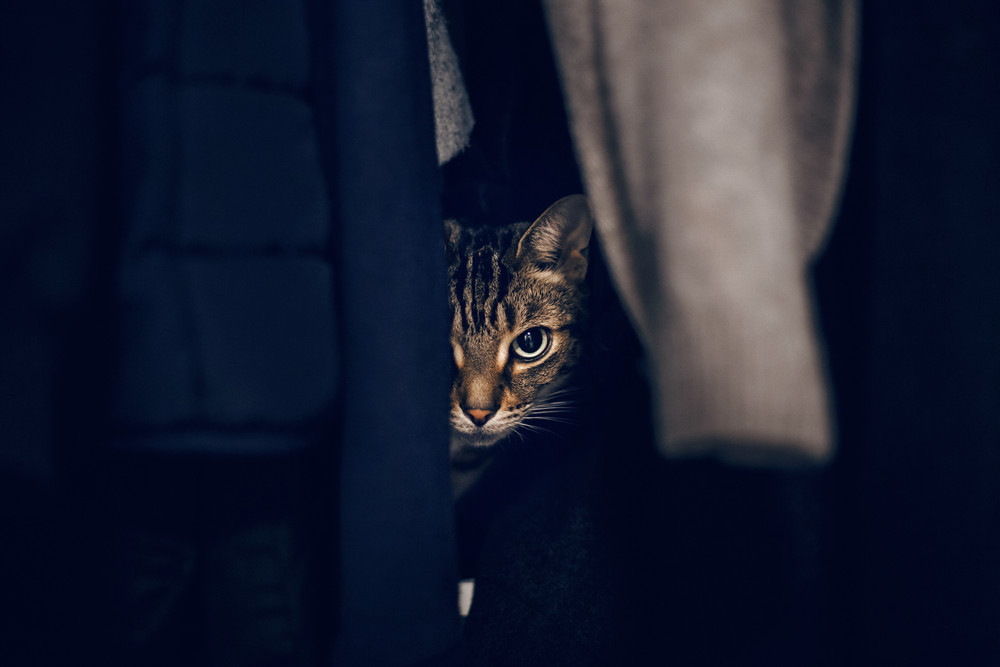
Cats are creatures of habit, and anything disrupting their routine can send them into a tailspin. Unexpected visitors, no matter how welcome they might be to you, can be highly unsettling for your feline friend. The new scents and sounds accompanying guests can overload their senses, making them retreat to their favorite hiding spot. They’re not being antisocial; they’re simply seeking solace from the sensory overload. Give them time, and they might come out to investigate once the initial shock wears off.
To ease the transition, try creating a quiet, comfortable space where your cat can retreat when guests arrive. This safe zone should be stocked with their favorite toys and maybe a cozy bed or blanket. Gradually, your cat may come to associate visitors with positive experiences, especially if treats or playtime are involved. Remember, it’s important to let your cat dictate the pace of these introductions. Respect their space, and over time, they may become more accepting company.
3. Rustling Plastic
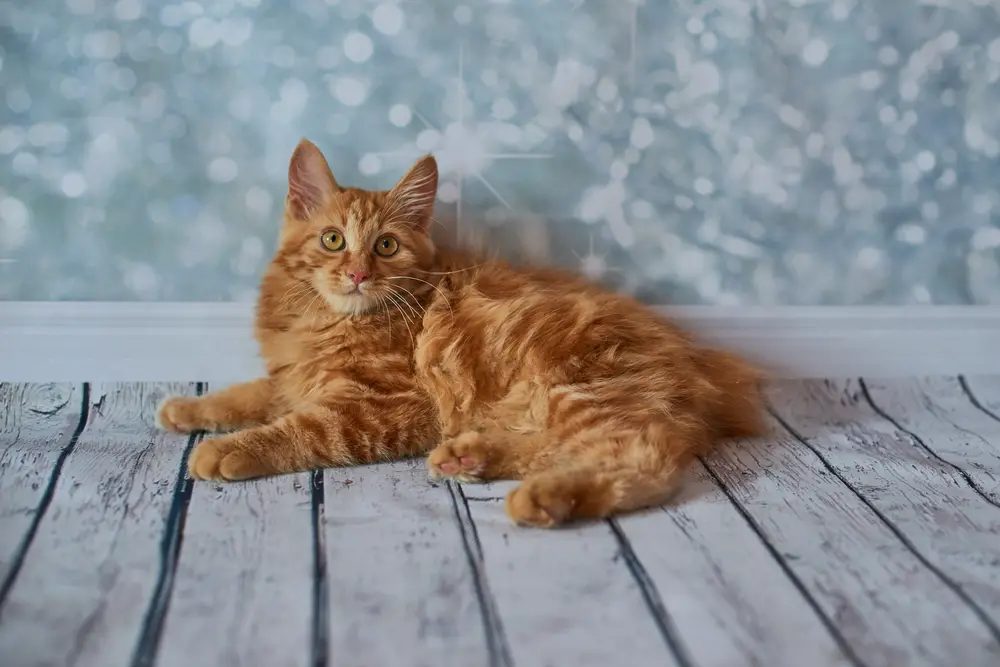
A simple plastic bag might seem harmless to you, but to a cat, it’s a crinkling, rustling enigma. The unpredictable sound can provoke their natural curiosity, while simultaneously triggering a flight response. The Spruce Pets highlights that the noise and movement of plastic bags can resemble prey in the wild, sparking a cat’s innate hunting instincts. Their response can be a mix of fascination and fear, leading to either a cautious approach or a speedy retreat. As amusing as their antics might be, ensure bags are safely stored away to prevent any accidental ingestion.
The texture and sound of a plastic bag can be alluring, making it a potential plaything for some adventurous cats. However, there’s a fine line between play and peril, as bags pose a suffocation risk. Instead of letting them play with plastic, offer more suitable toys that cater to their hunting instincts. These can provide the excitement they crave without the associated risks. Always prioritize your cat’s safety while indulging their playful nature.
4. New Furniture

Introducing a new piece of furniture into your home can be a jarring experience for your feline friend. Cats are territorial and sensitive to changes in their environment, and a new sofa or coffee table can disrupt the familiar scent landscape. They may view this new addition as an intruder, prompting them to explore it cautiously or avoid it altogether. You might notice your cat sniffing around or rubbing against the new item to mark it with their scent. This behavior is their way of taking ownership and making the change more acceptable.
If your cat seems particularly unsettled, try to introduce the new furniture gradually. Allow them to investigate at their own pace, using treats or toys to create positive associations. If the furniture has displaced a favorite lounging spot, try creating a new cozy area nearby. Remember, your cat needs time to adjust, and patience is essential. Over time, they’ll likely embrace the new addition as part of their domain.
5. Sudden Thunderstorms

Thunderstorms can turn the most composed cat into a bundle of nerves, with their loud booms and bright flashes. The unexpected nature of these natural phenomena can be deeply unsettling for a cat whose world is generally quiet and controlled. According to a study published by the American Veterinary Medical Association, many pets suffer from noise aversions, and thunderstorms are among the most common triggers. Your cat’s response may be to seek out a hiding spot or exhibit signs of distress such as trembling or excessive grooming. As a pet owner, providing comfort during these times is essential.
Creating a safe haven for your cat can help alleviate some of their anxiety during a storm. Choose a quiet, enclosed space where they can retreat, ideally one that’s insulated from the noise and flashes outside. Soft music or white noise can help drown out the storm’s racket. Additionally, staying calm yourself can reassure your cat that there’s no real danger. With a little preparation, you can help your feline weather the storm with minimal stress.
6. Cats Outside
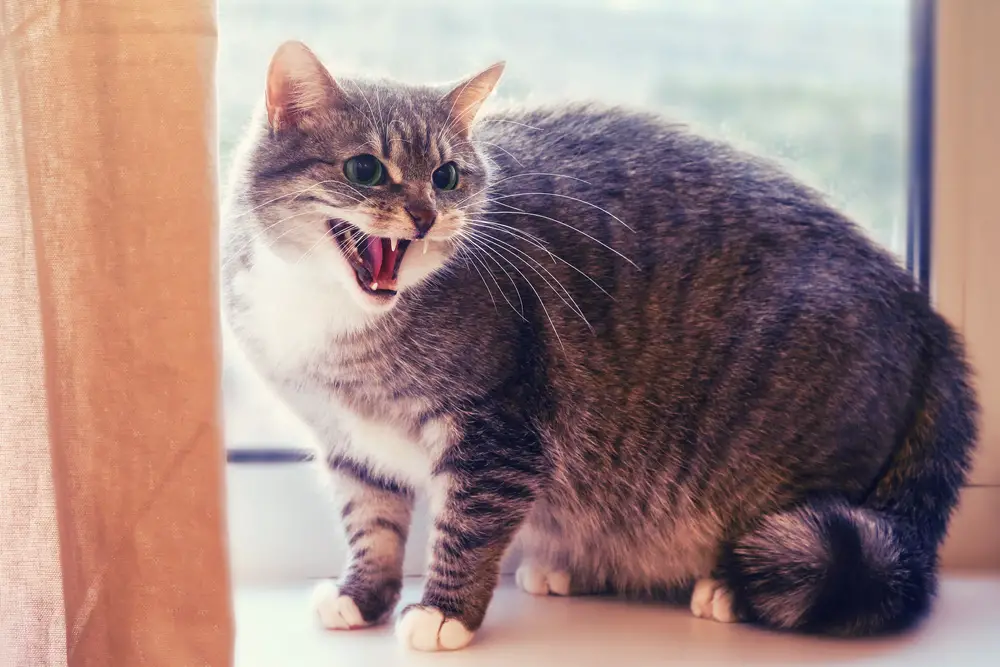
Spotting another cat outside can send your indoor cat into a frenzy of territorial behavior. The sight of a feline interloper can trigger defensive instincts, leading to hissing, yowling, or even aggressive behavior. This reaction is rooted in their need to protect their home turf from perceived threats. While it may be distressing to witness, remember that your cat is just following its instincts. A little understanding goes a long way in managing these stress-inducing encounters.
Closing the blinds or curtains may prevent your cat from seeing what’s outside and help maintain a peaceful environment indoors. Providing plenty of distractions, like toys and interactive games, can redirect their focus away from the window. Over time, your cat may become less reactive as they learn the outside cat poses no real threat. Encouraging calm behavior with treats or affection can also reinforce a sense of security. Each cat is different, so finding the right balance of reassurance and distraction is key.
7. Strange Smells
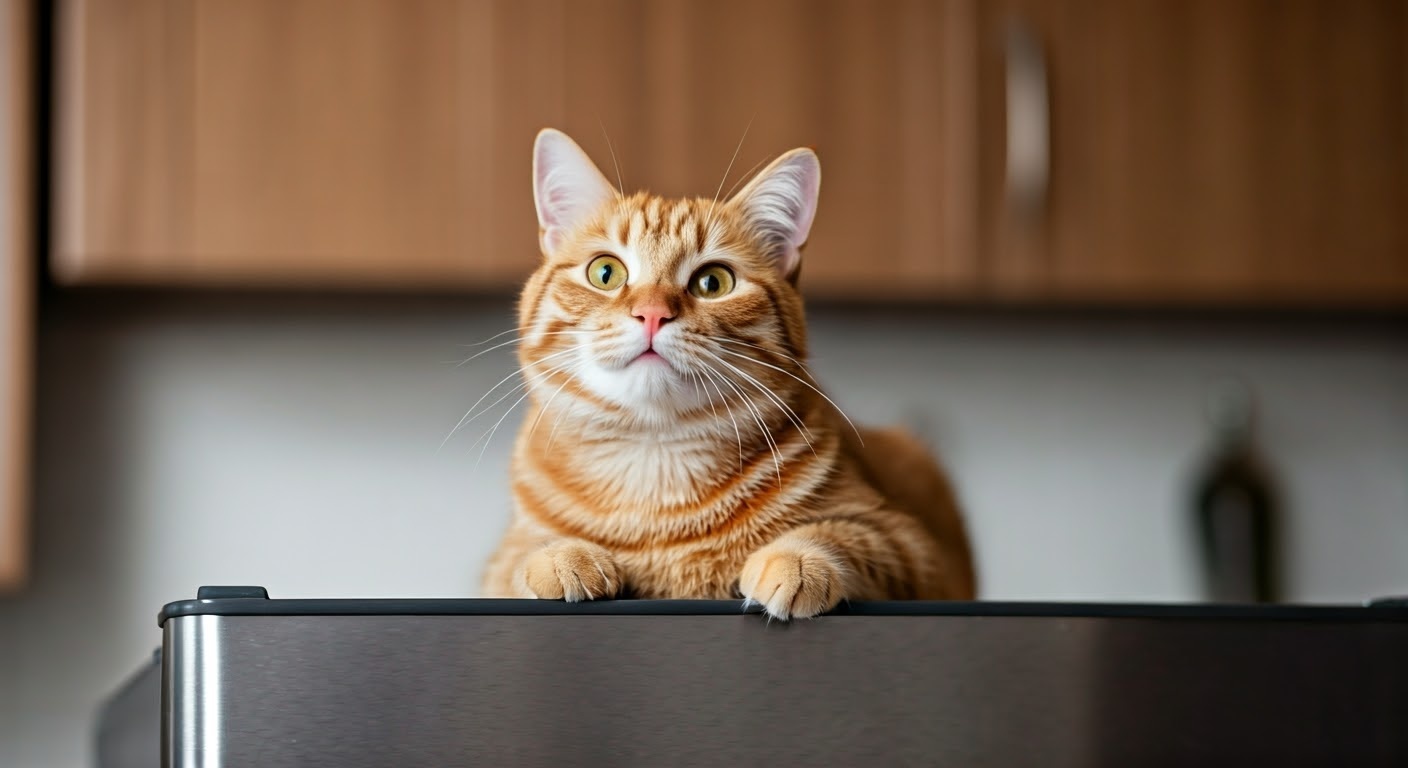
A new scent wafting through your home can be a shock to your cat, whose world is heavily influenced by smell. Whether it’s a new cleaning product, a different brand of litter, or a scented candle, unfamiliar aromas can be unsettling. According to Animal Planet, a cat’s sense of smell is 14 times stronger than a human’s, making them especially sensitive to environmental changes. The introduction of a new scent can lead to investigative behavior or cause them to retreat to familiar, comforting smells. Keeping this in mind when introducing new products can help maintain a harmonious environment for your cat.
When adding new scents to your home, consider their potential impact on your feline friend. Gradual introductions can help your cat acclimate to changes in their olfactory landscape. If a particular scent seems to upset your cat, try providing them with familiar-smelling items like their favorite blanket or toy. Maintaining a balance between new and familiar scents can help keep your cat calm. Above all, remember that your cat’s comfort is paramount when making changes to their environment.
8. Mirrors and Reflections
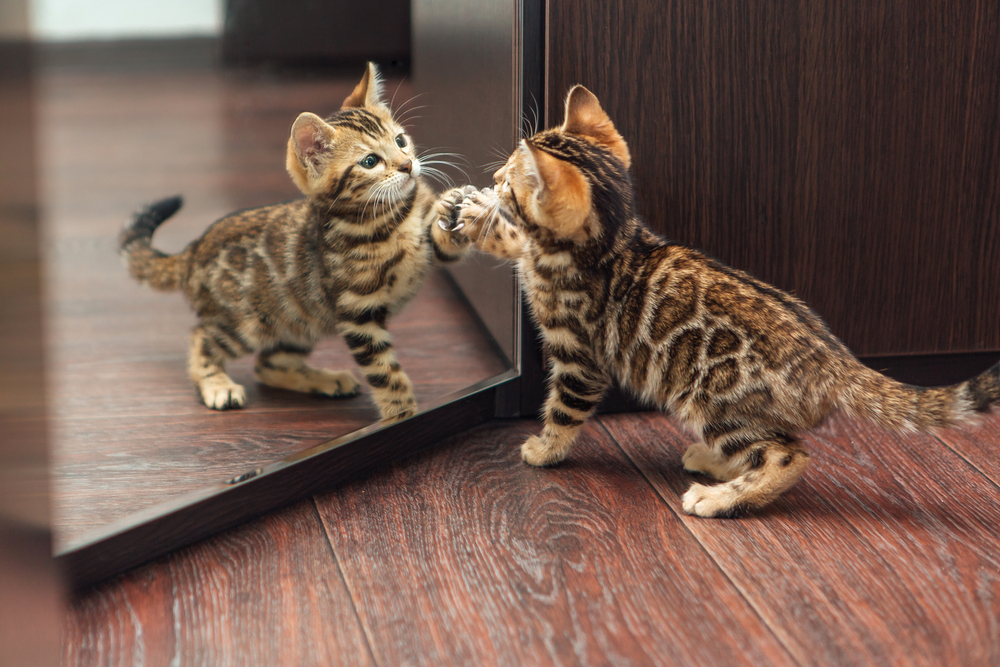
Mirrors can be a source of confusion for your cat, who may not understand that their reflection is just that—a reflection. They might perceive the mirror image as another cat, sparking curiosity or even anxiety. Observing your cat’s reaction to their reflection can be both entertaining and perplexing. Some cats will cautiously approach the mirror, while others may attempt to engage with their “new friend.” Over time, most cats realize there’s no threat and lose interest.
If your cat seems particularly distressed by mirrors, try covering them temporarily or positioning them out of your cat’s line of sight. Offering distractions such as toys or treats can help divert their attention. As your cat becomes more familiar with the presence of mirrors, their fascination will likely fade. If not, consider placing mirrors in less prominent locations to minimize stress. Ultimately, each cat’s response is unique, so observing their behavior is key to ensuring their comfort.
9. Ceiling Fans

Ceiling fans can be perplexing to cats, whose keen senses detect every movement and change in their environment. The swirling blades overhead can be both intriguing and intimidating, leading to a mix of curiosity and caution. Your cat may spend time observing the fan from a safe distance, occasionally glancing at it with suspicion. For some, the fan becomes just another part of the scenery, while for others, it remains a mysterious object. Understanding your cat’s perspective can help you address their concerns and soothe their anxieties.
If your cat seems particularly unsettled by the fan, try introducing it gradually, starting with low speeds. Allow your cat to observe and adjust at their own pace, providing reassurance with calm words and gentle petting. Over time, the ceiling fan may become a familiar aspect of your home rather than a source of stress. Ensuring your cat feels secure is essential in helping them acclimate to new household features. With patience, your cat will likely come to accept the fan as a non-threatening presence.
10. Loud Music
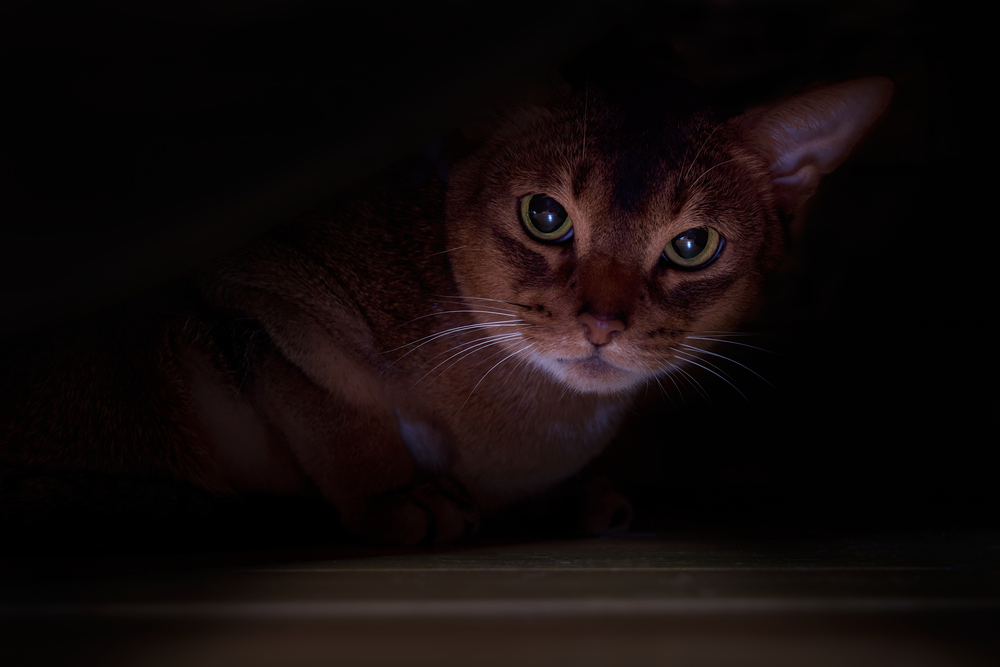
Cats are known for their acute hearing, making them sensitive to loud noises that might seem innocuous to people. Whether it’s blasting music, a noisy television, or a particularly raucous gathering, excessive sound can be overwhelming for your feline friend. They might react by hiding, meowing loudly, or displaying signs of stress such as dilated pupils or a flicking tail. It’s essential to be mindful of the noise levels in your home to keep your cat comfortable. Providing a quiet space for them to retreat can make all the difference.
To minimize stress, consider lowering the volume of your music or television when your cat is nearby. If a noisy event is unavoidable, creating a quiet sanctuary for your cat can help ease their anxiety. This space should be stocked with comforting items like their bed, toys, and perhaps a few treats. Over time, your cat may become more accustomed to the occasional loud noise. However, always prioritize their comfort and well-being when managing your home’s soundscape.
11. Ringing Doorbells
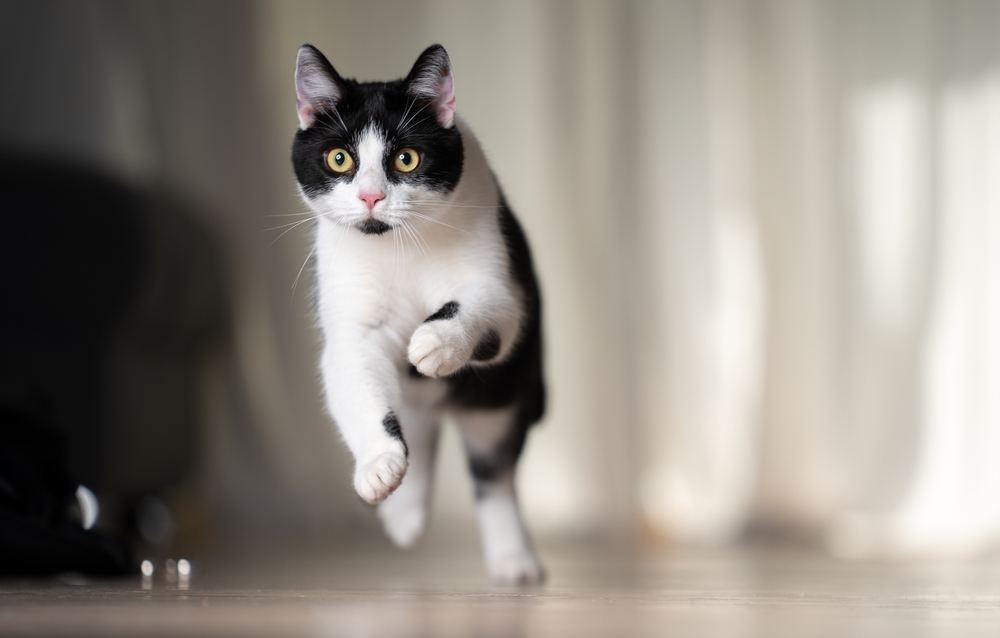
The sudden jolt of a ringing doorbell can send cats scurrying for cover, as it signals an unexpected interruption to their peaceful world. This abrupt sound often heralds the arrival of strangers, triggering your cat’s flight response. You might notice your cat darting under furniture or retreating to a favorite hiding spot at the sound. They’re not being anti-social; they’re merely reacting to the unexpected noise and potential intrusion. Allow your cat time to acclimate to visitors at their own pace.
If you receive frequent visitors, consider desensitizing your cat to the doorbell over time. You can do this by associating the sound with positive experiences, such as treats or playtime. Gradually, your cat may come to accept the doorbell as a non-threatening signal. Creating a quiet space where they can retreat during visits can also help them feel secure. Remember, every cat is different, so patience and understanding are crucial.
12. Routine Changes
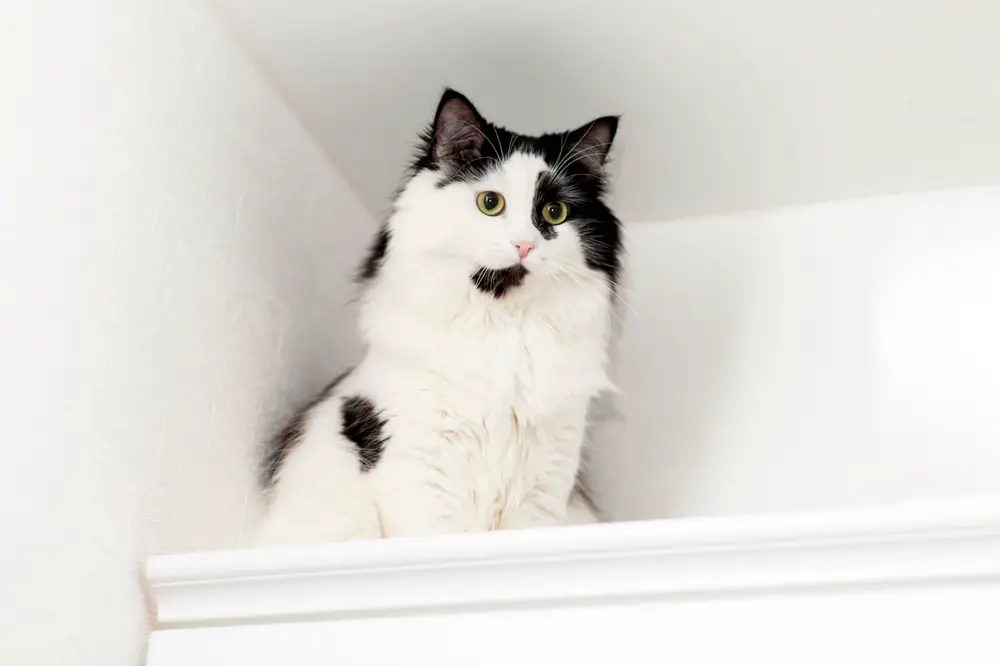
Cats thrive on routine, and any significant changes can throw them for a loop. Whether it’s a shift in feeding times, rearranged furniture, or a new addition to the family, these disruptions can cause stress for your feline companion. You might notice your cat acting out of sorts, exhibiting behaviors like excessive vocalization or hiding. It’s essential to provide stability and reassurance during these times. Gradually introducing changes can help your cat adjust without feeling overwhelmed.
When altering routines, aim for a balanced approach that respects your cat’s need for predictability. Gradual changes allow your cat to acclimate at a manageable pace, minimizing potential stress. During these transitions, maintaining familiar elements like regular feeding times or play sessions can offer comfort. Being attentive to your cat’s behavior and adjusting as needed can ease the process. With time and patience, your cat will likely adapt to their new normal.
13. Sudden Movements

A quick movement, whether it’s a swatting fly or a dropped book, can startle your cat and provoke an immediate reaction. Cats are naturally attuned to their surroundings, and sudden changes can trigger their fight-or-flight response. You might observe your cat jumping back or fleeing the scene in a flash. This sensitivity is an evolutionary trait designed to keep them safe from potential threats. Understanding this instinct can help you create a more cat-friendly environment.
To minimize startling your cat, try to move slowly and predictably when they’re nearby. If sudden movements are unavoidable, providing your cat with a safe retreat can help them feel more secure. Over time, your cat may become less reactive to these incidents as they learn there’s no real danger. Offering reassurance with gentle petting or soothing words can also help them settle. Each cat is unique, so tailoring your approach to their comfort level is essential.
14. Bath Time
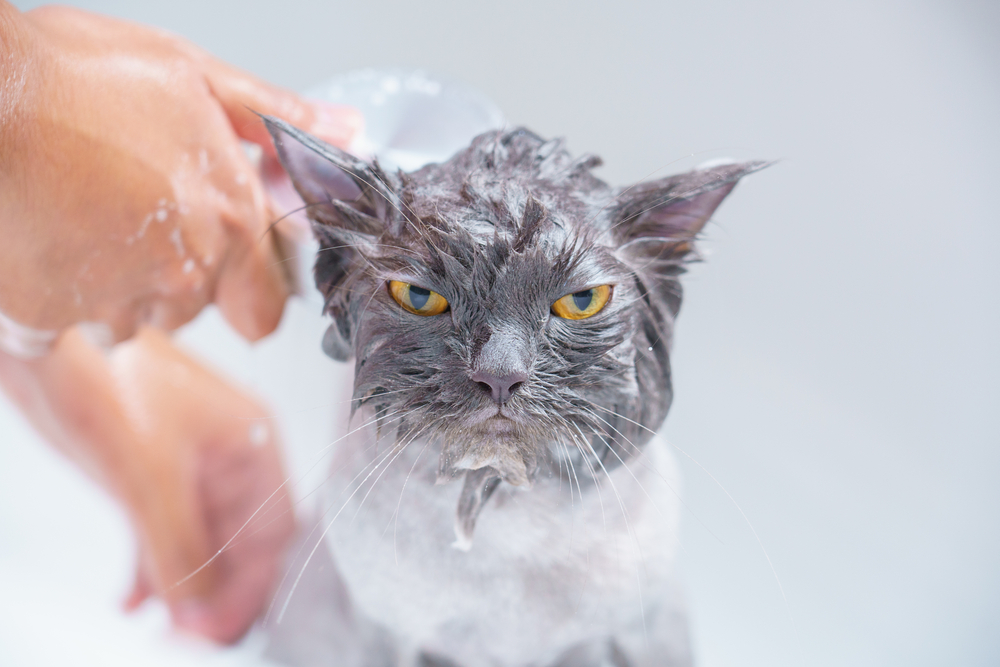
For many cats, the prospect of a bath is akin to a nightmare, triggering a cascade of stress and resistance. Water is not a natural element for most felines, whose ancestors evolved in arid environments. Your cat may react with vocal protests, clawing, or attempts to escape when faced with bath time. It’s crucial to approach this task with patience and a gentle touch. Ensuring your cat feels safe and secure can help make the experience less daunting.
To ease the process, introduce your cat to water gradually, starting with wetting just their paws or a damp cloth. Use lukewarm water and specialized cat shampoo to ensure their comfort and safety. Providing treats and praise throughout the bath can create positive associations, making future baths less stressful. Always prioritize your cat’s well-being, and don’t force the issue if they’re too distressed. Over time, you may find a routine that works for both you and your feline companion.
15. Unfamiliar Animals
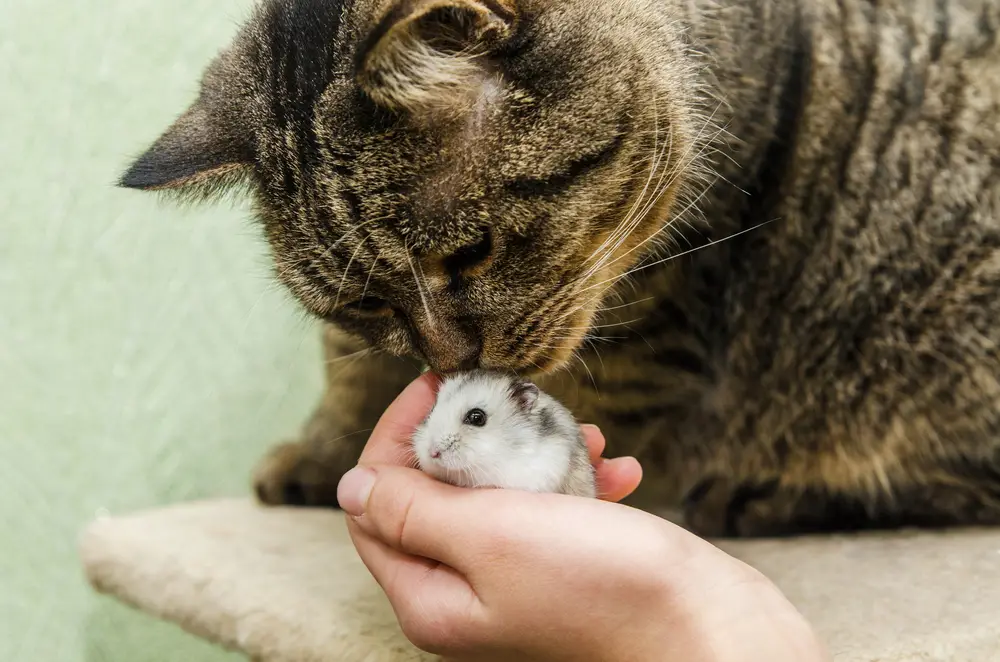
An encounter with an unfamiliar animal can provoke a strong reaction in your cat, who may perceive the newcomer as a potential threat. Whether it’s a dog, another cat, or even a small mammal, this intrusion on their territory can lead to defensive behavior. You might witness hissing, growling, or attempts to assert dominance in the face of this perceived challenge. Remember, your cat’s reaction is rooted in instinct and their need to protect their home. A thoughtful approach can help ease these encounters.
Introducing your cat to new animals should be done gradually and under controlled conditions. Allow them to observe from a distance, providing treats or toys as positive reinforcement. Over time, their curiosity may outweigh their fear, leading to more amicable interactions. Always supervise these introductions to ensure the safety and comfort of all animals involved. Patience and understanding are key to fostering harmonious relationships between your cat and their new acquaintances.
